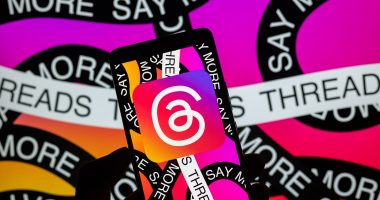In the world of marketing, it’s all about convincing the target audience and creating a strong bond between the brand and the consumer.
In this digital world we live in, finding ways to stand out and grab consumer attention is not easy. However, storytelling is a powerful tool that marketers can use to tell their brand story and capture the attention of their target audience. In this article, we take a closer look at the power of storytelling in marketing strategy.
Why Storytelling?
Humans are storytellers and storytellers by nature. We are programmed to hear and tell stories. Through stories, we can share emotions, values and experiences. So it’s no surprise that storytelling is a powerful tool in the marketing world. Storytelling allows brands to convey their message in an authentic and emotional way.
When consumers hear a story, they can more easily identify with the brand. People not only buy products but also the emotions associated with them. Storytelling enables brands to connect their products and services with consumers’ emotions, values and experiences. This creates a strong bond between the brand and the consumer.
A Good Story is Unforgettable
The goal of a marketing campaign is not only to grab the attention of the target audience but also to leave a lasting impression. A good story is easier to remember than a factual message. When consumers hear a good story, they are more likely to remember it than a boring sales pitch.
A good story can also go viral. When people are deeply moved by a story, they will share it with their friends and family. This can lead to a huge increase in brand awareness and can lead to greater engagement with the target audience.
A Good Story is Authentic
Consumers like authenticity. They want a brand that is honest and sincere. Storytelling enables brands to tell their story in an authentic way. A good story should not only be emotionally appealing, but also truthful. When a brand tells an authentic story, the target audience is more likely to trust the brand.
A good story is aimed at the target group
Telling a good story is not enough. The story should also be aimed at the target audience. The story should appeal to the target audience and give them the feeling that the brand understands them. This requires a deep understanding of the target audience and their needs.
The story must also be relevant to the target audience. It should align with their interests and values. If the story is not relevant to the target audience, it will not be effective in capturing their attention. And to be able to reach out to your target audience you can use social media platforms such as Linkedin. You might be asking yourself: “How much does LinkedIn Premium cost?”. If you are accurate with your targeting and your message that is definitely a worthwhile investment.
How to Use Storytelling in Marketing Strategy?
Storytelling can be used in different ways in marketing strategy. Below are some examples of how brands can use storytelling to get their message across.
1. Brand Story
A brand story is the story behind the brand. It is the story of how the brand came to be and how it has grown. This story can be used to show the target audience what the brand stands for and what makes the brand different from the competition.
2. Product Story
A product story is the story behind a specific product. It is the story of how the product came to be and what problems it was designed to solve. This can help customers understand the value and purpose of the product, leading them to feel more connected to it.
Customer Stories
Sharing customer stories is an effective way to show the real-life impact of the brand’s products or services. These stories can showcase how the product has improved the lives of customers, offering potential customers a glimpse of what they can expect.
Emotional Storytelling
Emotional storytelling involves creating a narrative that evokes emotions in the target audience. This could be anything from a heartwarming story of community and connection, to an inspiring tale of overcoming adversity. By engaging the audience’s emotions, brands can create a deeper connection and foster greater brand loyalty.
Educational Storytelling
Educational storytelling involves sharing information or knowledge in a narrative format. This can be an effective way to teach customers about a complex product or issue, making the information more accessible and engaging.
Interactive Storytelling
Interactive storytelling allows the audience to become a part of the story. This could involve interactive content, such as games or quizzes, or it could mean giving customers the opportunity to share their own stories.
Incorporating storytelling into your marketing strategy can help to create a more engaging and memorable brand experience. By telling meaningful stories, brands can connect with their audience on a deeper level, build trust, and foster long-term loyalty.









